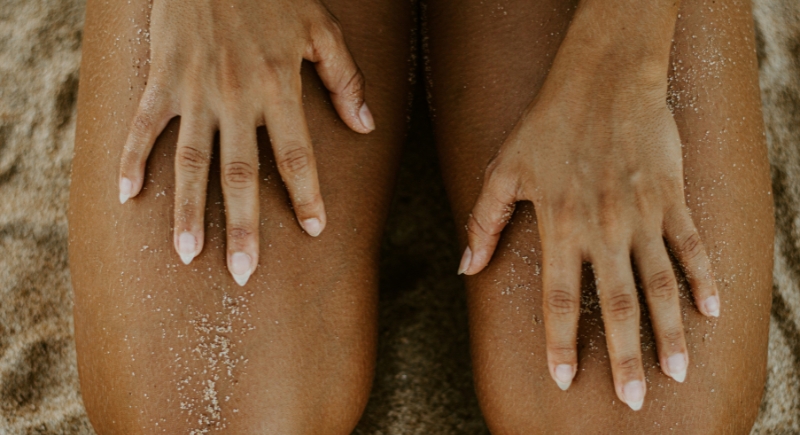Is Showering Every Day Harming Your Skin? Experts Weigh In
We step into a shower every morning as if it were as routine as pouring coffee. No one really grew up thinking a daily bath was negotiable. Yet, dermatologists have been discussing for years how frequent washing affects the skin. Research from several studies shows that daily showers do not always match what the skin actually needs. It already has a natural layer of oil and bacteria that protects against dryness, cracking, and irritation. Washing too often with strong soaps removes those natural defenses and makes skin more vulnerable. This is why some dermatologists have begun to challenge the assumption that everyone needs to shower each day.
One study examined hundreds of people living with eczema, a condition often worsened by skin dryness. Two groups were compared. One group showered six or more times each week, and the other once or twice weekly. Researchers expected the frequent showers to worsen symptoms. The results surprised them. There was no difference in dryness or irritation between the groups. This suggests that frequency is less important than other factors like water temperature and time spent under the spray.
Showering Less Does Not Equal Poor Hygiene
Many health professionals explain that hygiene is about targeted cleansing, not constant scrubbing. Hands need frequent washing to block the spread of germs. But the rest of the body usually does fine with less. Areas prone to sweat and bacteria, such as armpits and the groin, need more attention. A quick rinse focused on these zones is enough for many adults on days without intense exercise or outdoor work. People who sit in an air‑conditioned office or spend time at home often do not need daily showers.
The culture around bathing has changed dramatically over the last hundred years. Indoor plumbing and private bathrooms gave everyone easier access to running water. As showers became more available, marketing pushed them as a daily ritual tied to self‑presentation and confidence. Advertisements turned them into symbols of freshness, a personal reset before stepping into a new role for the day. This mindset is strong. Many feel judged if they admit to showering only a few times per week. Yet health experts repeatedly stress that showering habits should match personal needs and skin type, not a social script.
Signs Your Skin Wants You to Slow Down

Image via Unsplash/Wagner Santos
Dryness, redness, and itching after showering are clues that the skin barrier is being stripped. Very hot water worsens this effect. Long showers that stretch beyond ten minutes wash away natural oils. Dermatologists recommend keeping showers short and warm rather than hot. They also suggest fragrance‑free cleansers with limited ingredients to avoid irritation. Products that promise heavy exfoliation or intense foam often contain additives that disrupt the skin barrier.
Most people do not wash their hair daily, either. Scalp oils protect hair shafts, and overwashing strips those oils. Many dermatologists encourage shampooing two to three times a week unless a medical condition requires more. Stretching that interval often works best for textured or curly hair. Keeping hair care separate from body care allows you to manage both without overdoing either.
When Daily Showers Are Needed
Some lifestyles call for more frequent rinsing. People who work out intensely, spend hours outdoors, or have jobs that expose them to heavy dirt or chemicals benefit from daily showers. Sweat itself is not harmful, but the mix of sweat and bacteria in warm environments creates conditions that lead to odor and clogged pores. Acne‑prone skin or conditions like seborrheic dermatitis respond well to consistent cleansing with gentle products. In these cases, daily showers paired with moisturizers maintain skin health without creating new problems.
Parents often wonder about their children’s skin. Many pediatric dermatologists point out that young skin does not always need a daily full‑body wash. Targeted cleansing after playground time and handwashing throughout the day are usually enough. Overwashing during childhood can disrupt the development of the microbiome and lead to irritation. Quick rinses and mild products keep skin healthy and comfortable.
Tips for Showers That Protect Skin

Image via Unsplash/John Fornander
Short showers of five to ten minutes are recommended by the American Academy of Dermatology. Focus on armpits, groin, and feet rather than scrubbing every surface. Use lukewarm water. Hot water feels relaxing, but removes too much oil and leaves skin tight. Pat yourself dry with a towel instead of rubbing. Apply a gentle moisturizer within a few minutes of stepping out to lock in hydration. Look for products labeled for sensitive skin or with few added fragrances. These habits support the skin barrier and prevent dryness.
Even the environment benefits when shower routines shift. The Environmental Protection Agency estimates that the average shower uses more than 16 gallons of water. Fewer and shorter showers reduce water use significantly over time. This is not only better for the planet but also saves on utility bills. Many people who switch to every‑other‑day showers find that their skin stays the same or improves, while their household water use drops without much effort.
A Routine That Fits Your Skin
Experts agree that the best shower routine matches individual skin needs, activity level, and comfort. Some thrive on a daily shower, while others thrive on three per week. If your skin feels dry, try skipping a day and using a moisturizer after your next rinse. If you exercise daily, focus on short showers with gentle products. Observing your skin’s response over time is the most reliable guide.